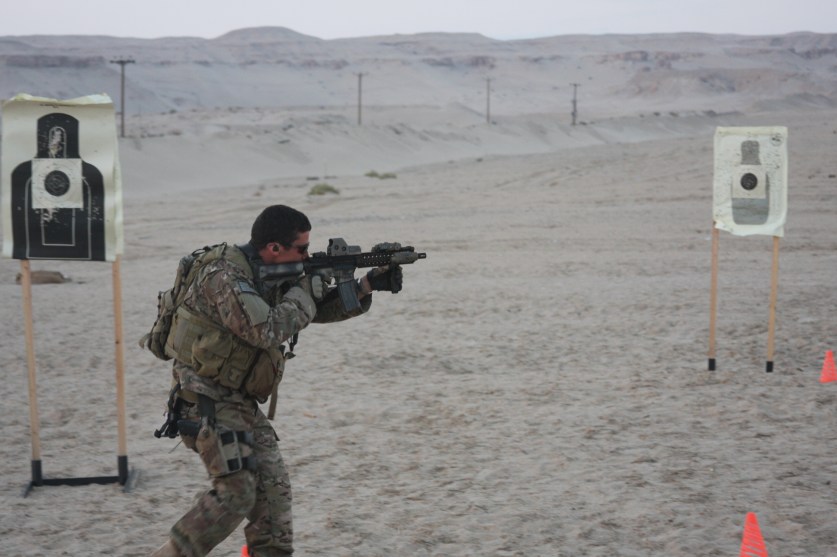The dude really should count his lucky stars today.
The man I’m talking about in the headline is a 29-year-old New York subway rider who was smashed in the head with a hammer last week.
His assailant was Christian Jeffers, a career criminal who has at least 47 (yes, forty-seven!) prior arrests before being arraigned last Friday for the unprovoked and vicious attack.
Jeffers bumped into the victim on the train platform then screamed, “Why you hit me?”
Then he suddenly pulled out a hammer from a bag and swung!
The victim got one arm up as he stepped back, but it wasn’t enough — nor was it the right defensive move — and the hammer landed with a sickening thunk sound.
From confrontational question to cranium contact, the scary assault took just 3 seconds.
“I didn’t see the hammer,” the victim told the New York Post. “It happened, like, too quick for me to react.”
The 29-year-old fell to the concrete, his forehead bleeding from the hammer blow. He was hospitalized, but fortunately not for too long.
There’s a lot to unpack with this case, but here are our top 3 takeaways:
- Avoid the “poisoned hand:” The shoulder bump that preceded the hammer attacker reminded me of what my Kung Fu master called the “poisoned hand.” No, it’s not an ancient death touch technique; it’s the concept of avoiding damage by not being where a kick or punch would land. This means getting in and out of range quickly.
Jeffers understood range when he intentionally bumped into his victim. So, when possible in public, get out of the way. Give people as wide a berth as possible and recognize when someone is within striking range — both yours and theirs.
- Steel your mind: It’s pretty clear by what the victim told reporters that he didn’t expect to be in a fight that day — especially against a career criminal armed with a hammer! If you can’t even imagine an event happening, it’s pretty difficult to prepare for it when it does happen.
That’s why, as part of my defensive mindset ritual, I either perform one draw of my chosen self-defense tool or say to myself, “This could be the day I might have to fight for my life or the life of a loved one.” This prepares me mentally right out of the gate.
- Don’t rely on your reaction time: Jeffer’s 29-year-old victim said that things happened too quickly for him to react. But that’s the problem with most unsuspecting prey; they always assume they’ll see an assault coming and have the time and distance to react.
News flash: Evil does not strike slowly. Two-legged predators attack in the concrete jungle just like their four-legged brethren do in the wild — unexpectedly, quickly, and violently.
That’s why you need consistent and realistic training, because (as the saying goes) you do not rise to the occasion but rather fall to the level of your training.
Conrad and I have spent years pressure-testing techniques against resistant partners armed with training weapons (from knives and guns to sticks and baseball bats).
We know what it takes to survive an urban ambush involving a hammer or any other blunt weapon.
And it’s not necessarily what’s taught on the range or in the dojo.
Fortunately, you don’t have to spend decades studying martial arts, combat sports, and combatives like we did.
That’s because we’ve distilled the best tips, tactics, and training drills in “Club Proof 1.0.”
And in honor of my namesake holiday today, you can get this home study course for half price during St. Patrick’s Day week.
Just use the 50% off promo code stpaddy2022 at checkout.
Enroll in “Club Proof” today so you don’t have to rely on luck to survive a blunt weapon attack.
But don’t wait — our St. Patrick’s Day sale ends at 11:59 p.m. Pacific Time this Saturday.




